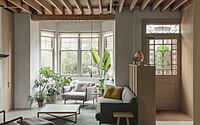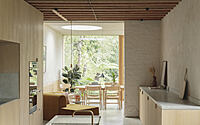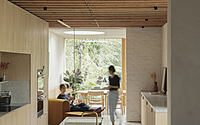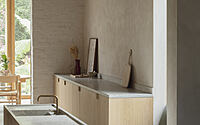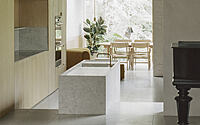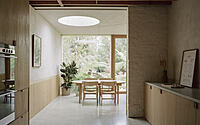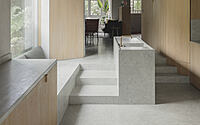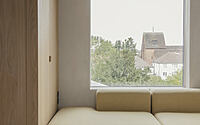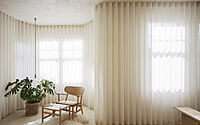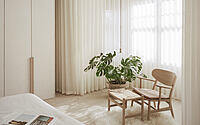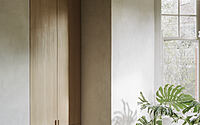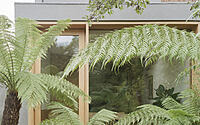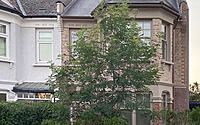Low Energy House: Revamping a Historic Home in London
This Edwardian terrace in Muswell Hill, London, has been expertly refurbished by Ben Ridley, Director at Architecture for London, to reduce energy requirements and create a comfortable, low energy house.
Triple glazing and improved airtightness and insulation of the building envelope, as well as a 172mm SIPS (6.77in) rear extension with highly insulated materials, have achieved a Passivhaus standard U-value of 0.15 or better (1.59 W/m2K). Further, natural materials like stone, timber and lime plaster were used throughout, and a Mechanical Ventilation Heat Recovery (MVHR) system was installed to provide pre-heated fresh air and filter the incoming air for a healthy indoor environment.











About Low Energy House
Revamping a Historic Home: Sustainable Refurbishment of a Muswell Hill Edwardian Terrace
Ben Ridley, Director at Architecture for London, undertook the sustainable refurbishment of a typical terraced home in Muswell Hill, London. With a constrained budget, the aim was to reveal and celebrate the original structure’s modest beauty while reducing energy requirements and creating a comfortable, low energy house.
Triple Glazing and Insulation
Triple glazing, improved airtightness and insulation of the building envelope were key to reducing energy demands. Walls were insulated externally at the side and rear, and internally at the front with wood fibre. This allowed for the preservation of the Edwardian facade. Besides, a 172mm SIPS (6.77in) rear extension was built with highly insulated materials and existing building elements achieved a Passivhaus standard U-value of 0.15 or better (1.59 W/m2K).
Natural Materials and MVHR System
Masonry nib walls were retained at ground floor to avoid energy-intensive steel box frames. Natural materials like stone, timber and lime plaster were used throughout, instead of cement-based products. Additionally, a Mechanical Ventilation Heat Recovery (MVHR) system was installed to provide pre-heated fresh air, creating a warm and comfortable home. The system also filters the incoming air, removing pollen, diesel particulates and NOx to ensure a healthy indoor environment.
By taking a holistic approach to the refurbishment of this Edwardian terrace, Ben Ridley has set an example of how similar homes in London can be transformed to reduce energy requirements and create a comfortable, low energy home.
Photography by Lorenzo Zandri and Christian Brailey
Visit Architecture for London
- by Matt Watts